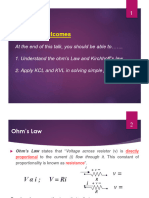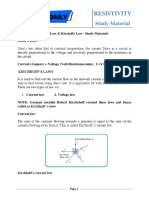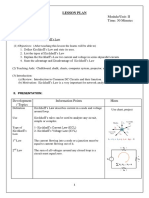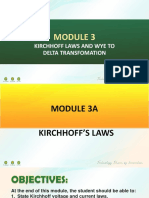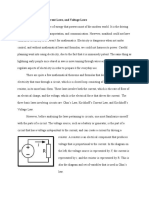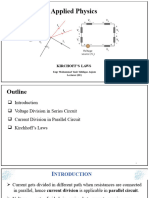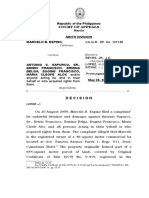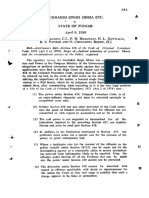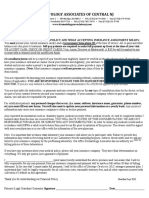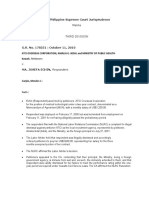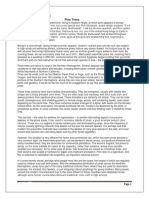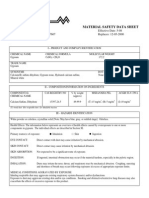0% found this document useful (0 votes)
21 views5 pagesLaws
The document explains Ohm's Law and Kirchhoff's Laws, detailing their definitions, formulas, and applications in electrical circuits and PCB design. Ohm's Law relates voltage, current, and resistance, while Kirchhoff's Laws address current and voltage conservation in circuits. The document also includes examples, multiple-choice questions, and interview questions to assess understanding of these fundamental concepts in electronics.
Uploaded by
Shanthana.kCopyright
© © All Rights Reserved
We take content rights seriously. If you suspect this is your content, claim it here.
Available Formats
Download as DOCX, PDF, TXT or read online on Scribd
0% found this document useful (0 votes)
21 views5 pagesLaws
The document explains Ohm's Law and Kirchhoff's Laws, detailing their definitions, formulas, and applications in electrical circuits and PCB design. Ohm's Law relates voltage, current, and resistance, while Kirchhoff's Laws address current and voltage conservation in circuits. The document also includes examples, multiple-choice questions, and interview questions to assess understanding of these fundamental concepts in electronics.
Uploaded by
Shanthana.kCopyright
© © All Rights Reserved
We take content rights seriously. If you suspect this is your content, claim it here.
Available Formats
Download as DOCX, PDF, TXT or read online on Scribd
/ 5


